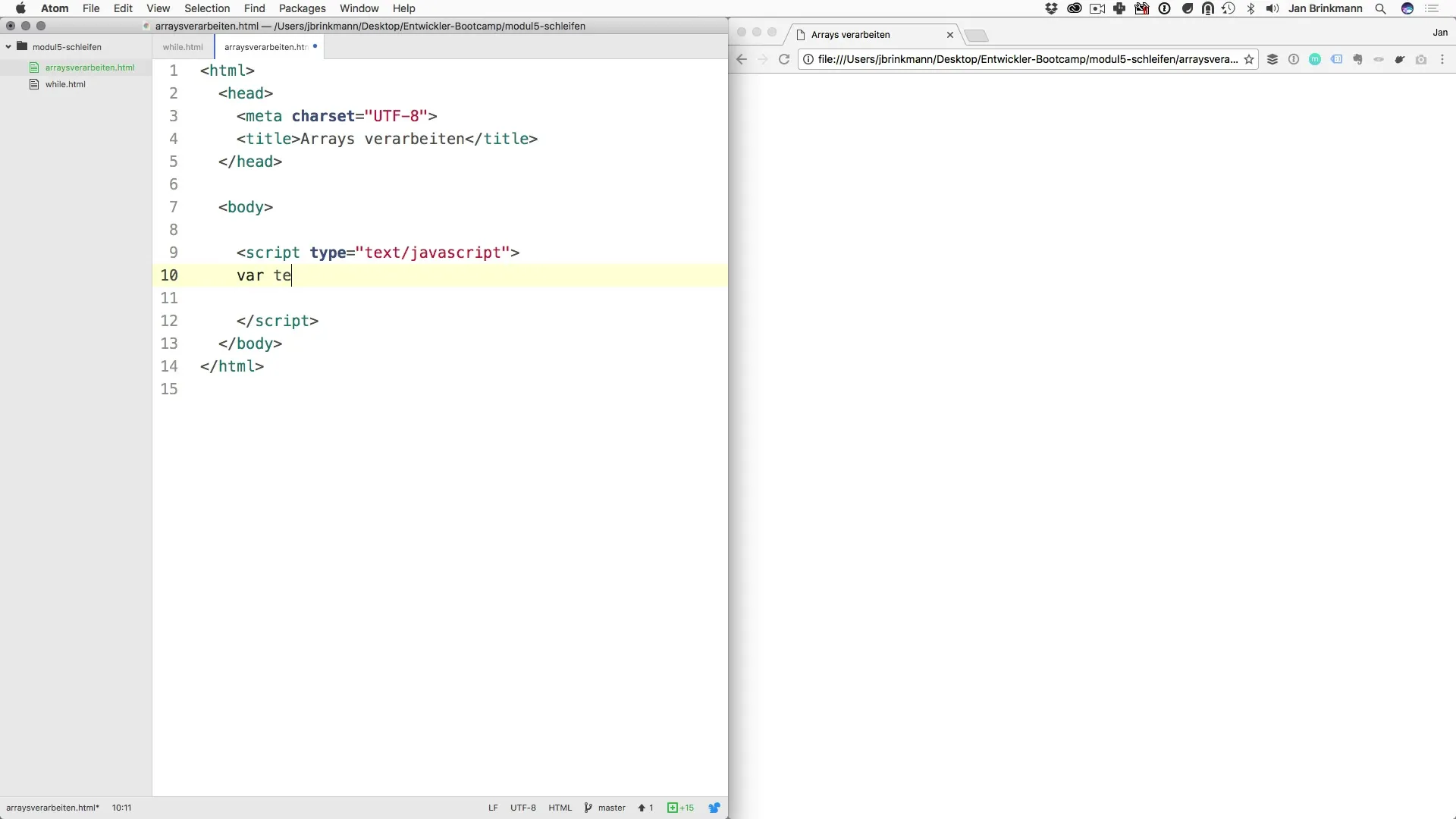The effective processing of arrays is a central theme in software programming. With loops, you can optimize access to and manipulation of data in arrays. Learn how to implement both forward and backward processing of arrays using while loops.
Main findings
- Arrays are collections of elements that can be processed efficiently.
- The indices of arrays start at 0 and end at the number of elements minus one.
- With while loops, you can dynamically and flexibly output and manipulate array elements.
Step-by-step guide to processing arrays
1. Creating an array
Start by creating an array with different values. In this example, we will create an array of participants. We will declare an array with the names "Jan", "Stefan", and "Peter". This array will be processed later.

2. Preparing for output
The next step is to dynamically determine the number of participants to ensure that the output works regardless of the size of the array. For this, you need a loop counter, which is typically named i and starts at 0.
3. Defining the loop
Now you define a while loop that runs as long as i is less than the number of participants. The value of i is incremented by one in each iteration. The loop checks if i is less than the length of the array before calling the output function.
4. Dynamic output of participants
Within the loop, you use document.write to output the names of the participants. Instead of fixed indices (0, 1, 2), you access the current value of i here. It is important to also include a line break so that the output remains visually appealing.
5. Backward processing of arrays
You can also reverse the output by adjusting the loop to iterate from the last element back to the first element. For this, you start at participant.length - 1 and output as long as i is greater than or equal to 0. Reduce i by one in each step.
6. Checking the indices
Make sure that the highest index of your array is participant.length - 1. If you try to access an index that does not exist (for example, if you set i equal to the length of the array), this will cause an error. Stick to the rule that you must always be less than the length of the array to avoid issues.
7. Conclusion and reference to further topics
After covering the basics of processing arrays with while loops, you can use these concepts in further programming scenarios. In the next step, we will explore the common for loop, which is also often used to iterate through arrays.
Summary—Arrays in Software Programming: Effective processing with loops
Processing arrays in software programming is a crucial aspect that can be made more efficient by using loops. By using while loops, you can dynamically process elements and perform both forward and backward iteration. A precise understanding of the indices and their handling is essential here.
Frequently asked questions
How do I start processing arrays?You create an array with elements and initialize a loop counter.
Which loop is suitable for outputting array elements?The while loop is a suitable choice for dynamically outputting array elements.
How do I safely access array indices?Ensure that you only use indices that are less than the length of the array to avoid errors.
Can I also process arrays backward?Yes, by starting the loop from the last position (length - 1) and counting backward.


